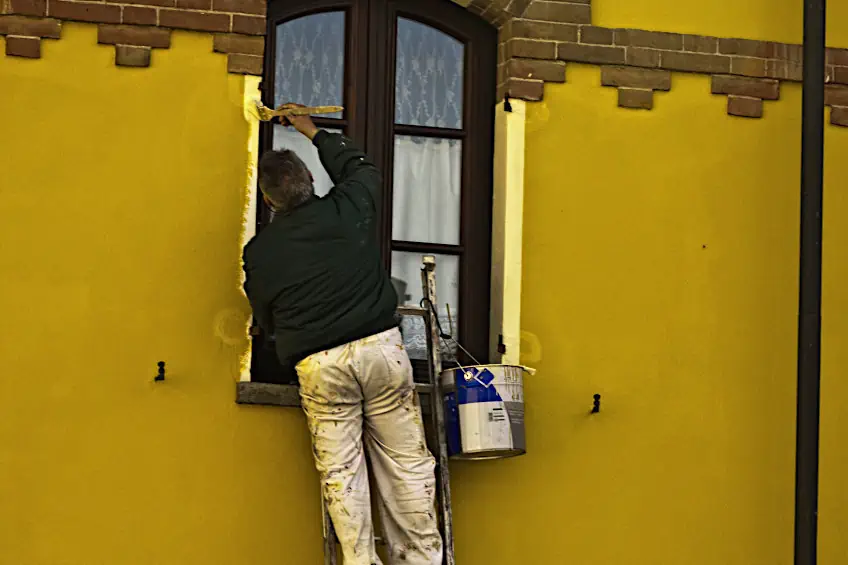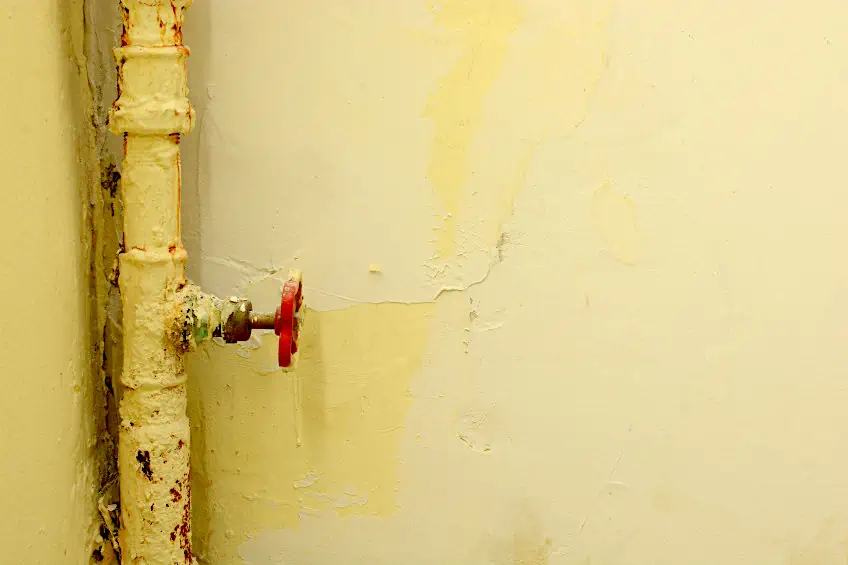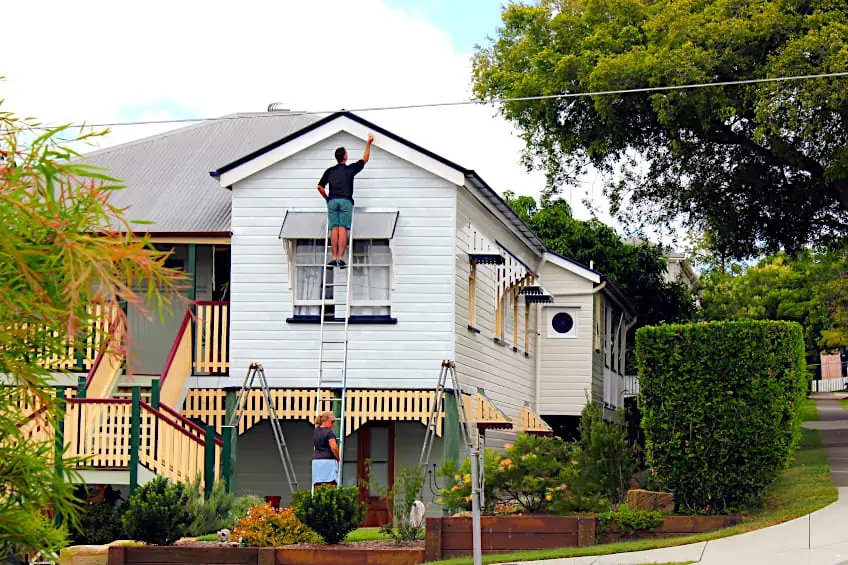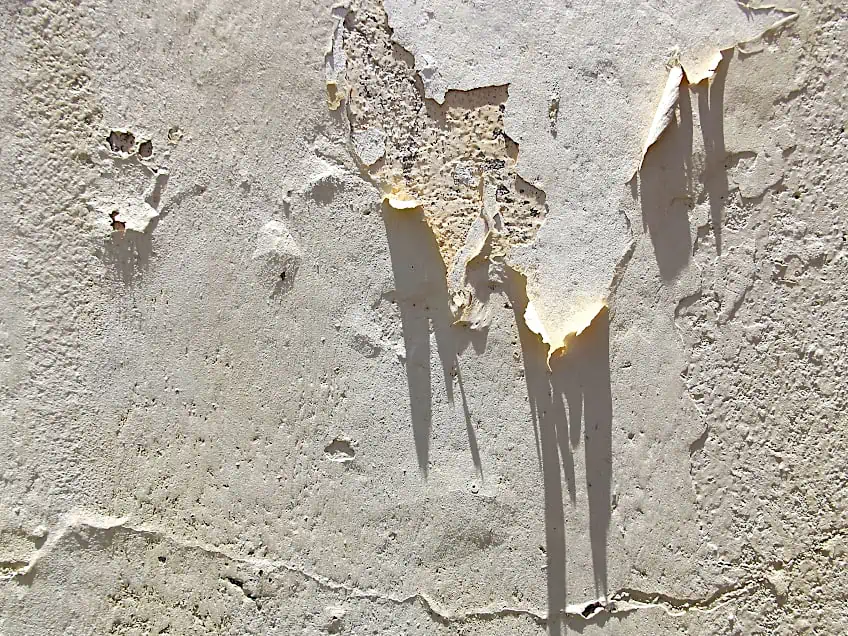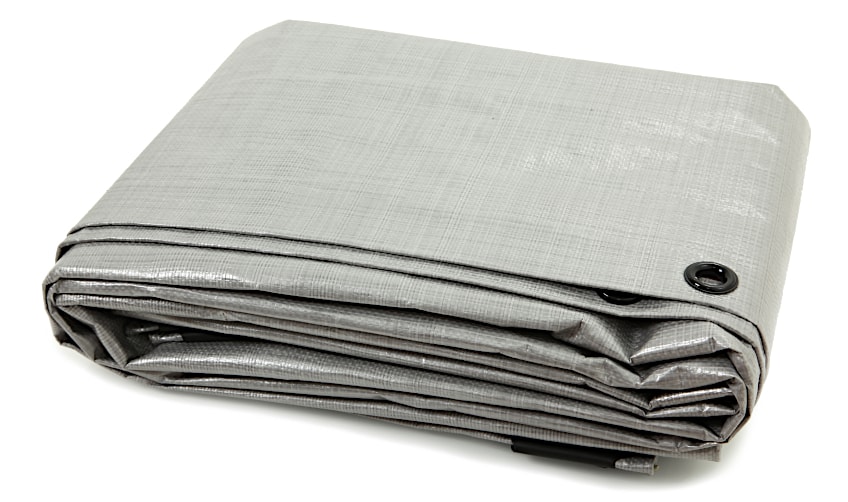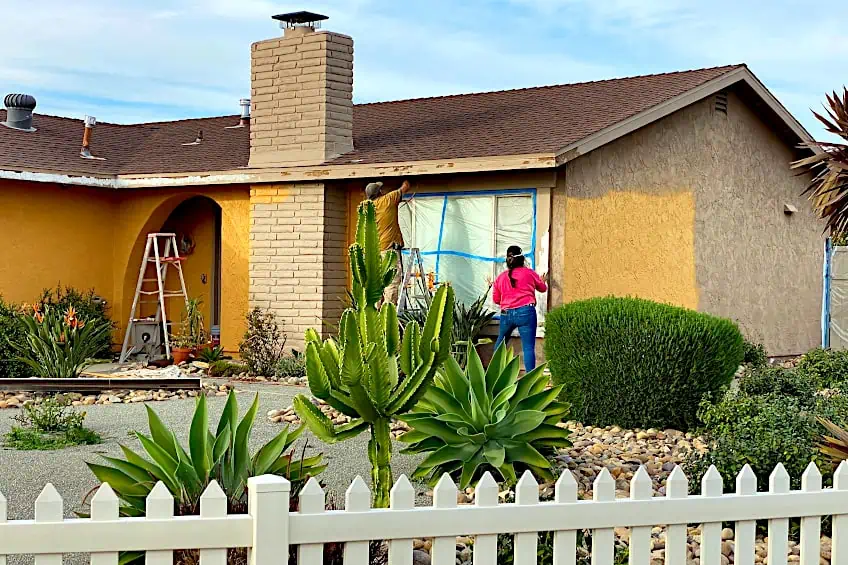Can You Paint in the Rain? – Wet Weather Painting Guide
This post may contain affiliate links. We may earn a small commission from purchases made through them, at no additional cost to you. You help to support resin-expert.com
While our mastery of technology means that we have come a long way as a species, controlling the weather still seems to be beyond our reach. As such, we’re at the mercy of the clouds and sun when it comes to what we can do and when we can do it, at least when we’re outdoors. One activity that usually requires nice, sunny weather is painting, but can you paint in the rain, though? Well, maybe. Let’s have a look at whether painting in the rain is possible, and if so, what you’d need to do and what your limitations would be.
Table of Contents
Knowing Is Half the Work
We’re going to go out on a limb and say that you’re attempting to paint in the rain, you absolutely have to get the job done. Can you paint in the rain? Sort of. It depends on a number of factors, but painting during a downpour can be challenging to say the least, especially considering that a large percentage of paint is made of water-, or water-soluble substances.
Now, painting while it’s actually raining can be pretty difficult, but it is possible to paint using certain types of paint when the surface in question is still wet or damp. Knowing what type of paint you’re able to use and what type of surfaces you can paint while they’re wet gives you the advantage of knowing whether you can get those important paint jobs done even when the weather isn’t cooperating.
So, how do you work around painting in the rain? Aside from knowing which paint types are up for the job, you should be able to do a good job as long as the rain doesn’t come into direct contact with the surface you are trying to paint. Additionally, if you are working on an exterior wall (or any other work) you could simply enclose the surface using a plastic sheet or similar covering to ensure it remains dry.
What Should You Consider Before Painting in the Rain?
Painting in rainy weather can be challenging, but if you know what factors to consider and know how to compensate for these factors, you should be fine. Below are a few factors you should consider if you’re thinking about painting in rainy weather and how they can affect not only your ability to paint but that paint itself.
Rain Intensity and Duration
This is arguably the most important thing to consider. If you’re experiencing torrential downpours for hours at a time it’s unlikely that the surface is going to remain dry long enough for you to be able to prepare it, let alone paint. However, if you’re experiencing intermittent showers that give your surface enough time to dry and for you to set up your coverings, you should be good to go.
Humidity and Temperature
If you’ve worked with paint before then you know that humidity and overall temperature can play a huge role in how your paint dries and cures. If the humidity is too high, or if the temperature is too hot or too cold your paint will not dry or cure correctly.
If you choose to apply your paint anyway, you’ll likely have to remove the botched paint job and start all over again when the weather permits.
Type of Paint and Surface
The type of paint you’d like to use will affect whether you can paint while it’s raining or not. Oil-based paints cannot be used in wet or damp conditions as they will not adhere correctly or dry for that matter. Acrylic and/or acrylic-enamel paint fare quite well in rainy conditions, but if the surface you are trying to paint retains or absorbs water, you won’t be able to use either of these paints effectively.
Safety Precautions
Doing pretty much anything in the rain can be dangerous. With that being said, painting exterior walls usually involves using a ladder, standing on wet and/or slippery surfaces, having to handle wet tools, and even securing a tarp over your workpiece while it rains.
Couple these things with strong winds and extreme cold, and you’ll realize that painting outdoors while it rains can be quite dangerous. Although the choice is ultimately yours, we highly recommend waiting for a dry wind-free day, which is the safest time to get your painting done.
Can You Paint Inside When It Rains?
If you can paint outside while it rains, can you paint inside when it rains? Sure. It’s perfectly fine to paint inside when it rains as long as no rainwater touches your surface. Although, you should ensure that the humidity and temperature indoors are conducive to your paint curing and drying before you begin to avoid disappointment.
Advantages and Disadvantages to Painting in the Rain
Painting is an endeavor that requires some skill and the right condition in order to execute effectively. Your surface needs to be prepared, and you need to have the right tools and pain for the job. The conditions, tools, and execution need to be just right, so there aren’t any notable advantages to painting in the rain, but there are many disadvantages.
For one, you run the risk of your paint getting wet once it has been applied, which could lead to your paint running and drying incorrectly. Secondly, you’ll likely have to work under a tarp, and if it’s windy this could lead to your tarp moving and coming into contact with your wet paint, ruining that section of your workpiece.
You will also have to compete with uncontrollable humidity or lack thereof. If there is too much moisture present in the air, your paint will not dry correctly. If there is too little moisture in the air, your paint may dry too fast. You will also have to ensure that your surface is as dry as possible and wait for the rain to stop before you are able to set up and prepare your surface.
Finally, you will have to contend with unfavorable weather conditions that not only affect your paint but your ability to apply it as well. Whether it’s wet tool handles, walking on wet surfaces, or trying to mix paint in the cold weather, pretty much everything counts against you when you’re trying to paint outdoors while it rains.
How to Paint in the Rain
Now that you know what you’re getting yourself into, we thought we would show you how to go about painting in the rain, should you find yourself needing to do so. Remember that painting outdoors during a downpour can be hazardous, so wear some gloves and boots to minimize the chance of slippage while you work.
Prepare Your Workspace
Before you prepare your surface, you should ensure that your workspace is properly enclosed. Get a clear tarp or similar material and enclose the wall you will be painting; you can attach it to the overhang of your roof or any other elevated pin that will allow you to shield the wall from the incoming rain. If your tarp is long enough, secure the bottom as well with something heavy like a brick.
Once you have your work area nicely covered, you can bring in your ladder and the rest of your tools you will need. If any surfaces or tools have gotten wet during the move, use a clean dry cloth to get them as dry as possible before using them. Finally, ensure that the surface of your wall is dry before continuing to the next step in the process.
Techniques for Painting in the Rain
There aren’t any dedicated techniques to paint while it rains if it is about to rain. Once your work area has been enclosed, simply paint as you would normally. If your surface is dry, ensure that it is clean and that the previous coat of paint has been removed if necessary. Clean the surface, and apply your exterior wall primer as per the manufacturer’s instructions.
Once the primer has been applied, allow it to set for the manufacturer’s recommended time period. Once this period has elapsed, it’s time to apply your paint. Just as you would with the primer, give the container a good shake, pour some out into a painter’s tray, get some on your roller, and begin painting your walls.
If the weather is cold, work as fast as possible without rushing. Work in sections if your wall is large, ensuring you blend each section in with the next as you move along. Once your surface has been painted, allow the paint to dry for eight to 12 hours depending on the humidity, temperature, and manufacturer’s recommendation before attempting to apply any additional coats.
Tips for the Best Results When Painting in the Rain
If you absolutely have to paint in the rain, it is always best to wait for the rain to stop completely before attempting to paint the surface. Most experts recommend waiting for five days of direct sunlight to ensure that there is no moisture trapped in the surface of your walls that could damage your paint. If you really can’t do this, the aforementioned method should ensure an acceptable finish.
You should also ensure that the paint is capable of being applied during wet and humid conditions. Latex and acrylic-latex paints tend to adhere and cure well in these conditions, whereas oil-based paints tend to have a really hard time adhering to surfaces under these conditions. All of that being said, ensure your conditions are as favorable as possible should you need to paint in the rain.
Now that you have an idea of why you might need to paint while it is raining out, what tools will serve you well if you attempt it, what paint to use for painting in the rain, and some of the steps to follow to ensure a good finish, we recommend you gather your things and give it your best shot. Remember that it’s going to be cold out so bundle up and don’t forget to wear a pair of gloves and a face mask while painting.
Frequently Asked Questions
Why Can’t You Paint When It Rains?
Since rain is fundamentally liquid, and paint is liquid, why can’t you paint when it rains? Well, put simply, paint needs certain conditions to adhere and cure correctly. One very important condition is for paint to keep its consistency, and especially for water-based paints, for the liquid part to evaporate so that only the binder and pigments remain on the surface. If it is too humid, too wet, too hot, or too cold, the paint fail to adhere and dry as it was designed to do, which will result in a poor finish and you have to repeat the process. For oil-based paints, if the surface is wet when paint is applied, the paint will trap this moisture inside, which will lead to damage or the formation of mold or rust to the surface, causing the paint to stain, bubble, and flake over time.
What Happens If It Rains on Fresh Paint?
Have you ever asked yourself what happens if it rains on fresh paint? Paint needs certain conditions to dry, and if it comes into contact with too much moisture during the drying process, it can cause the paint to bubble and run. If your paint is water-based, the addition of water before it has dried can dilute your paint causing it to run and lose color intensity in the most exposed places. The result will not only be a ruined finish that looks unappealing, your coating will now have less of the long-term durability of an undiluted exterior paint.
Which Type of Paint Should Not Be Applied During, Damp, and Humid Weather?
If you are thinking about painting your home’s exterior during the rainy season, then you have probably asked yourself which type of paint should not be applied during damp and humid weather. The answer is oil-based and enamel paints. Any paint with an oil base will trap surface moisture inside, leading to a poor result and possible damage to your surface and your new paint. In addition, oil-based paints will only cure once their liquid content has completely evaporated, a process that requires low humidity and generally takes much longer than water-based paints. As a result, if you apply it during humid weather, your paint will remain tacky and subject to damage until evaporation is complete.
How Long Does Paint Need to Dry Before Rain?
If you’re itching to paint your home’s exterior this rainy season, then you have probably asked yourself this question. How long does paint need to dry before the rain sets in? the answer to this is usually around eight to 12 hours, given that humidity is consistent, and no moisture comes into contact with your paint.


